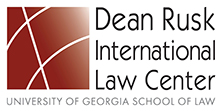Abstract
This thesis presents an overview of no-fault automobile insurance and examines current issues in the political and policy debate surrounding insurance reform. Part I summarizes the costs of automobile accidents and describes how the tort system handles claims arising from such accidents. Part II gives an introduction to the world of insurance, explaining theoretical differences between fault and no-fault based auto insurance. Part III presents the history of various no-fault plans. Part IV describes and explains current issues in no-fault insurance. Costs, benefits, and cost-efficiency of no-fault insurance are also discussed. Since the accident prevention is a social goal as like the accident compensation, deterrence and safety are addressed. Our major conclusion drawn from this analysis is that consumers should determine which type of insurance is to prevail. The paper concludes with a proposal for no-fault no threshold automobile insurance which can become accepted as a result of comprising between proponents of the reform and their opponents.
Repository Citation
Davidovic, Dragana, "Crisis in no-fault automobile insurance" (1990). LLM Theses and Essays. 302.
https://digitalcommons.law.uga.edu/stu_llm/302


